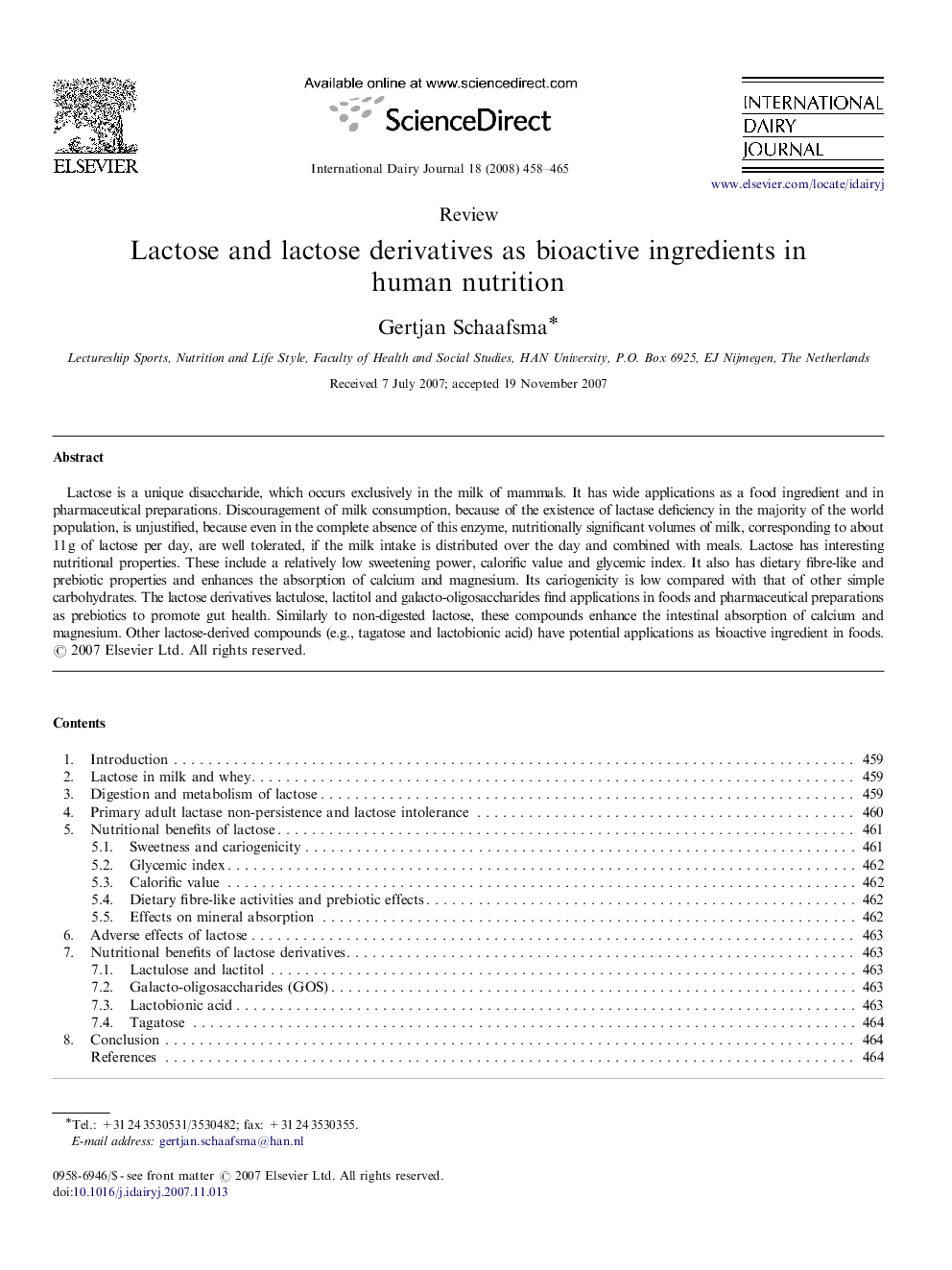| Article ID | Journal | Published Year | Pages | File Type |
|---|---|---|---|---|
| 2435322 | International Dairy Journal | 2008 | 8 Pages |
Lactose is a unique disaccharide, which occurs exclusively in the milk of mammals. It has wide applications as a food ingredient and in pharmaceutical preparations. Discouragement of milk consumption, because of the existence of lactase deficiency in the majority of the world population, is unjustified, because even in the complete absence of this enzyme, nutritionally significant volumes of milk, corresponding to about 11 g of lactose per day, are well tolerated, if the milk intake is distributed over the day and combined with meals. Lactose has interesting nutritional properties. These include a relatively low sweetening power, calorific value and glycemic index. It also has dietary fibre-like and prebiotic properties and enhances the absorption of calcium and magnesium. Its cariogenicity is low compared with that of other simple carbohydrates. The lactose derivatives lactulose, lactitol and galacto-oligosaccharides find applications in foods and pharmaceutical preparations as prebiotics to promote gut health. Similarly to non-digested lactose, these compounds enhance the intestinal absorption of calcium and magnesium. Other lactose-derived compounds (e.g., tagatose and lactobionic acid) have potential applications as bioactive ingredient in foods.
